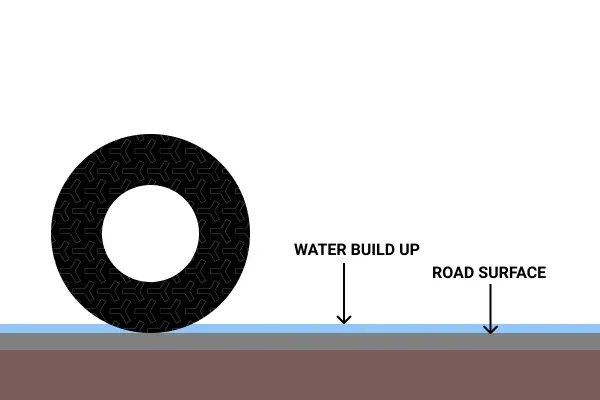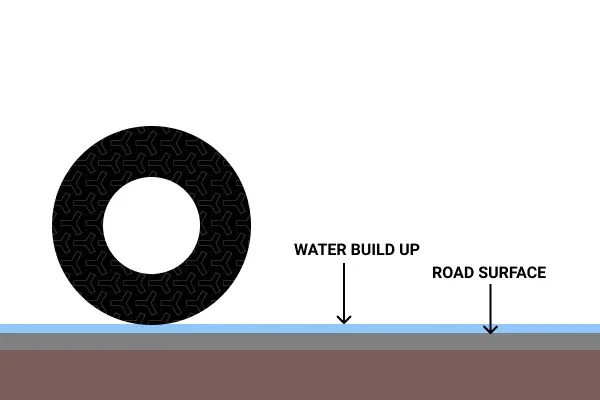Skidding/Hydroplaning
Hydroplaning happens when the water accumulated under the tires is more than the amount of water dispersed by the tires (Figure 5.12). The water pressure can cause your vehicle to rise and slide on top of a thin water layer that remains between your tires and the road surface. This can result in a complete loss of contact of your vehicle with the road surface, putting you in danger of skidding. The chances of hydroplaning depend on various factors like speed of the vehicle, depth of tire tread, depth of water on the road, and vehicle weight.


- The speed of the vehicle: You should travel at low speed as it gives more time for the tires to dissipate the water and maintain contact with the road surface. At higher speed, the chances of hydroplaning are more.
- The depth of tire treads: Deeper tire treads dissipate more water compared to worn out and smooth tires and reduce the chances of hydroplaning. When the depth of tire treads is less than 3 mm, you should replace the tires.
- The depth of water: Higher the water level, higher the chances of hydroplaning. However, hydroplaning may even occur when the water level on the road is low, so you have to be cautious while driving under such conditions.
- The weight of vehicle: Heavier the vehicle, lower are the chances for hydroplaning. If your vehicle is light, you have to be more cautious.
For you as a driver, it is important to learn how to avoid hydroplaning and regain control when it happens. Although it can be a scary experience, the most important thing is to stay calm.